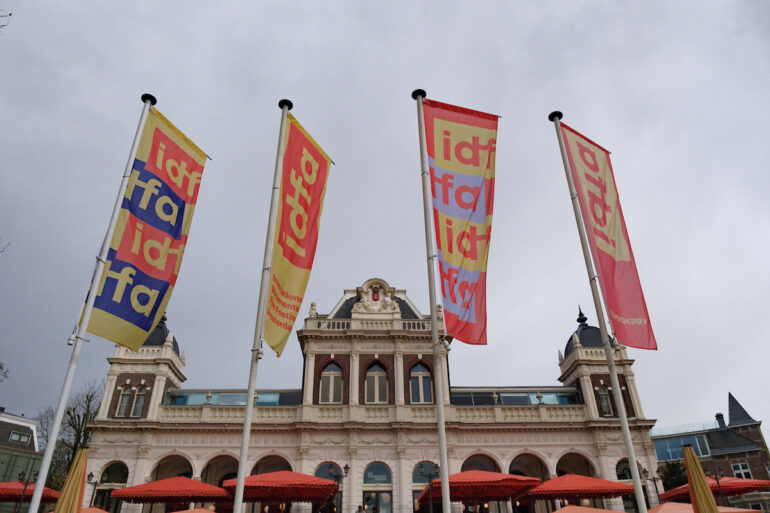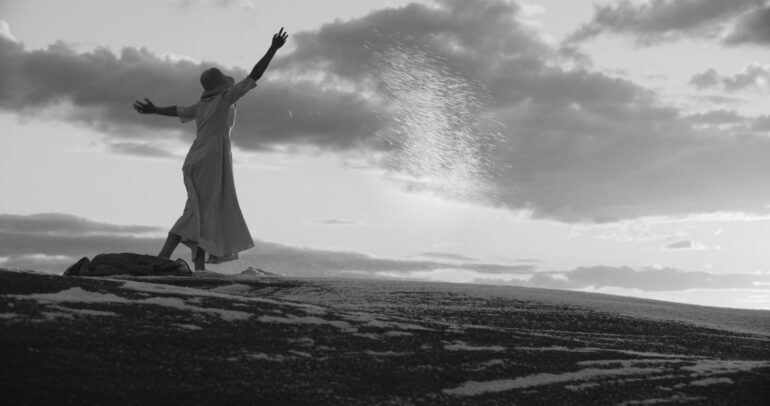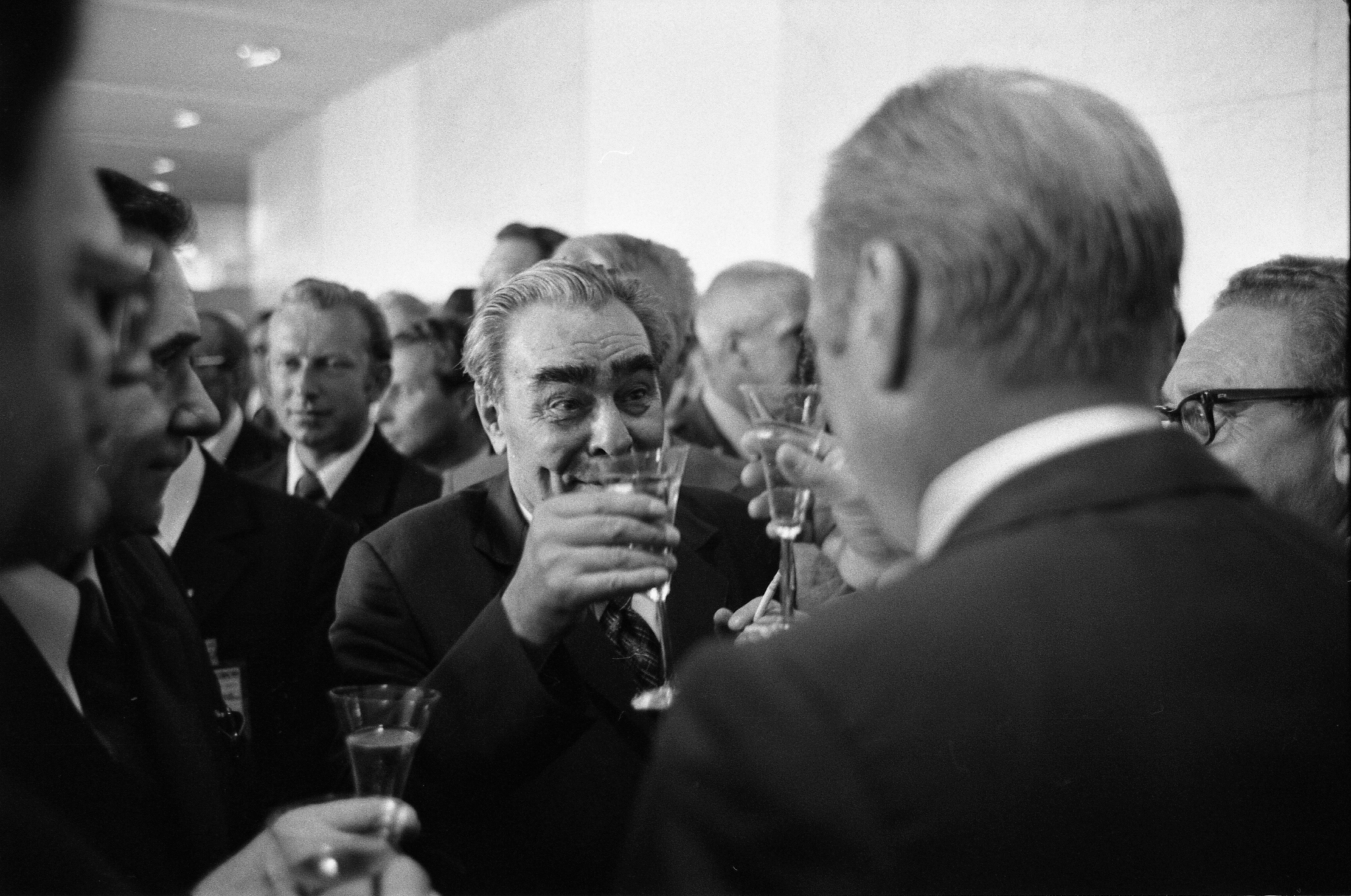WRITTEN BY: Davide Abbatescianni
Fighting for democracy and human rights remains at the forefront of the conversation, yet the recent budget cuts — often driven by political decisions — cast a decidedly gloomy outlook.
The 37th edition of IDFA (13–23 November) offered a sobering snapshot of the Nordic documentary landscape — a mix of creative strength and mounting structural pressures. While Nordic companies and professionals remained active across the industry platforms, the number of Nordic-led premieres in the festival was unusually slim.
Among the standout titles were Trillion by Viktor Kossakovsky (Norway/US) in Envision Competition and the Denmark-backed A Fox Under a Pink Moon (Robah ve mah sorti) in International Competition. Nordic co-productions such as Past Future Continuous and Amílcar broadened the footprint, whilst the Forum and Producers Connection showcased Virpi Suutari’s Lonesome Land and Michael Madsen’s Architecture as Invention. Yet this year’s presence still felt lighter than usual.
“The presence is, in a way, quite good… All the central players are here,” said Ulla Simonen of AVEK, who moderated the Producers Connection. “However, in terms of films in the festival, there is only one Norwegian title, and only a few Nordic projects are represented in the Forum.” Her mission centred on forging collaborations, but she sensed widespread concern: “Nobody is saying, ‘Our funding is secure.’ Budgets are decreasing, and political shifts can make the whole sector — especially documentary — much more difficult.”
Finland’s situation encapsulates the instability. AVEK’s budget was halved. "The impact is already visible,” she noted. ”If we take Virpi Suutari’s film, she is not able to apply from us the full amount we supported last year. We can speculate she lost up to 50,000 euro in this cut, which she must now find internationally. This will most likely also mean more artistic work to be moved out of Finland.”
This pressure is felt by filmmakers. Iraq’s Karrar Al-Azzawi, based in Norway and editing Dreaming Souls, said the region “can definitely do much better” in visibility and competitiveness. “There are expectations of what stories we are supposed to tell and how — especially for people like me who come from a different background.” While Norway has made progress on inclusion, “in other countries like Sweden things have gone in the wrong direction”. He also lamented diminished broadcaster commitment.
For Inka Achté, Head of Programming at DocPoint, the slim slate was not surprising. “Apart from Trillion and a few co-productions, there were no full Nordic films at IDFA,” she noted. Many Nordic filmmakers aim for CPH:DOX first, reducing open-premiere titles for Amsterdam. Yet she sees a strong wave emerging: “At DocPoint 2026 we’ll have a record number of Nordic titles — urgent social films and intimate humane stories.” For Nordic networking, she added, “I’d go closer — to Nordisk Panorama or CPH:DOX. IDFA is more about understanding the global landscape.”
From the broadcaster side, Yle’s Erkko Lyytinen echoed concerns about declining visibility: “Nordic filmmakers have received less attention internationally than ten years ago. Other continents have taken more space.” Yle has restructured its factual output with an emphasis on audience clarity: “Knowing who the film is for is now of great importance.” The biggest gap, he said, is in “target-audience thinking”. He also regretted the loss of open dialogue at this year’s Forum: “Without open commentary, some essential dialogue was lost.” The boycott of Israeli filmmakers unsettled many EBU colleagues: “We are too small a community to be fundamentally divided.”
The uncertainty was amplified by the shockwaves coming from Brussels. As Nordisk Film & TV Fond’s Documentary Advisor Ove Rishøj Jensen underscored, the recent wave of Creative Europe rejections of training programmes represents “a dramatic shift for the entire European ecosystem”. Many of the affected workshops — some running for more than two decades — have shaped generations of filmmakers, functioning as incubators for both talent and international co-productions. Their disappearance, he stressed, will not only affect emerging directors, but also the producers who traditionally relied on these labs to develop first features. “For many new filmmakers, these training programmes have been an important first step,” he noted, adding that one experienced producer told him: “Now I will for sure think twice before picking up a project from a debut director.” With the landscape for documentary training set to change “dramatically from 2026 on”, Jensen warned that the long-term consequences for Nordic talent circulation and cross-border collaboration remain unpredictable. Even though it is still to be published, what new training initiatives will get funding from Creative Europe, we know that initiatives with decades of experience will be reduced — potentially with severe consequences.
Beyond funding, discussions shifted to distribution and audiences. Maja Lindquist of Doc Lounge observed deep worry about shrinking broadcaster and institutional support. “There is a growing awareness that audience engagement needs to be built already at development stage,” she said, though producers often lack resources. Alternative exhibitors are becoming crucial: “The big festivals remain key for launches, but exhibitors like Doc Lounge engage local audiences and generate screening revenue.” She also sees a growing openness to “experiment with new release models”.
For Simonen, despite challenges, community spirit remains IDFA’s greatest asset. “There is a very strong sense of community… People really come together, help each other, look for alternative ways to collaborate.” Yet the warning stands: The crisis is not only political, but structural. “If power shifts toward conglomerates deciding what we see, that becomes a serious concern. Documentary filmmakers are on the front line.”
Despite a thinner Nordic presence on screen, the conversations in Amsterdam revealed a region confronting — with clarity and urgency — intertwined crises of funding, democracy and cultural visibility. Survival, most agreed, will demand collaboration, risk-taking and a renewed commitment to audiences at home and abroad.




